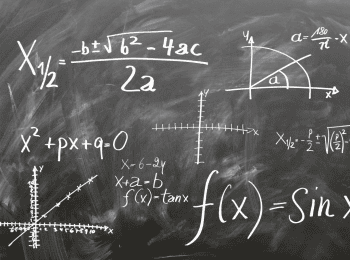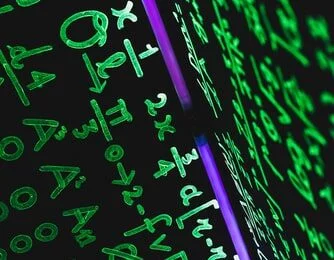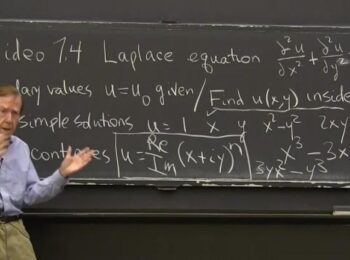Once you’ve learned about derivatives and exponential functions separately, you can move on to calculating the derivatives of exponential functions. Let’s look at a few problems involving these equations, and break down the components you’ll need to know to solve them correctly.
You’ll need to know about the following to solve these complicated problems:
What is an Exponential Function?
The definition of an exponential function can be explained by the following form:
F(x) equals a x
X is a variable, and the letter stands for the base of the function, or the mathematical term constant. The transcendental number e, which equals 2.71828, is the most used exponential function in calculus. When you use e, the expression turns into f(x) equal e x.
When you increase the exponent by one, the function value increases by the transcendental number e. When you decrease the exponent by one, the function value decreases by the same amount, that is, it’s divided by e.
You will often encounter base-10 exponents in experimental science and electronics. The form for these problems is f(x) equals 10x. Increase the exponent by one, and the base-10 function goes up by a factor of 10.
Decrease the exponent, and the value decreases by one-tenth. A numerical change of one-tenths is referred to as one order of magnitude.
When you have e, 10 or a similar constant base the exponential functional rescinds the logarithm, and the logarithm rescinds the exponential. Therefore, the logarithm and exponential functions are inverses of each other.
An example: If you have a base of 10 and x equals three. Log (10 to the x power) equals log (10 to the third power). Then log equals 1000 equals three. Given that the base is 10 and the log equals 1000
10(exponential log x) equals 10 (exponential log 1000) equals 10 to the third power equals 1000.
What is a Derivative?
A derivative is a tool used in differential calculus. Derivatives help determine rates of change, and slope lines of tangents. Derivatives have limits you need to use when working on equations.
Let’s look at the function f(x) equals 2x to the fifth power plus 7x cubed plus five.
Use differentiation to determine the function that complements f. The second function is f’s derivative. Differentiation is the process you use to find the derivative.
The derivative in this problem is f’ (x) equals 10 x to the 4th power plus 21x squared.
A tick mark next to a variable indicates that it’s a derivative. Df means a change in the function (f), and dx means a change in x the variable. Df over dx is called a Leibnitz notation/ratio notation. The f with a tick mark is known as a prime or language notation.
Derivatives can tell us about rates of change. D(t) can stand for the distance from your home in miles as a time function. It follows that D(2) equals five means you’re five miles to him after two hours of traveling.
D’2 tells you two hours have passed. The formula is then the distance changes 20 miles for every hour that elapses equals 20 miles each hour equals 20 miles per hour. D’2(2) indicates that after two hours have gone by the velocity is 20 miles per hour.
Another example: C'(x) is the cost of making x tons of spaghetti. Then C'(30) equals 15,000 lets us know that producing 30 tons of spaghetti costs $15,000. C’ (30) equals 48,000 indicates that 30 tons of spaghetti are being produced at the cost of $48,000 per ton.
Example #1
The expression used for the derivative of e to the x power is the same expression we used for e to the x power at the beginning of the problem. The problem reads d (e to the x power over dx equals d to the x power.
The equation means that the slope equals the y-value, or function value, for all points on the graph. You can check a graph representation of the problem to verify this.
Example #2
Let’s look at a problem where x equals 2. At that point on the graph, the y value equals e to the second power, which is similar to or congruent to 7.39. The derivative of e to the x power is the same as e to the x power, so the tangent line slope located at x equals two is e to the second power, congruent or similar to 7.39
Example #3
Find the derivative of the exponential function y equals ten X to the third power.
You’ll use this equation to get the answer:
Dy over dx equals ten to the third power x (ln10) followed by d (3x) over dx equals three ln10 (10 to the third power x)
Example #4
Let’s look at a harder example. Find y equals sin (e to the third power x). Y will equal sin u if u equals e to the third power x.
Dy over dx equals dy over du and du over dx, then (cos u) d (e to the third power x) over dx equals (cos e to the third power x)(3e to third power x), and then 3e to the third power x cos e to the third power x
Example #5
You’ll occasionally encounter derivatives of exponential functions that are even more complicated.
Use the equation U equals cos2x and v equals e x squared to negative one. Follow it with du over dx equals 2 sin 2x, followed by dv over dx equals e to the x squared negative one power (2x), which results in the following equation:
Dy over dx equals [cos 2x] [(x squared negative one (2x)] plus [ (e x squared negative one (negative 2 sin 2x] equals (e x squared negative 1) [cos2x(2x) minus 2sin2x]
equals 2e x squared negative one[x cos2x minus sin2x]
How to Understand Calculus, Algebra, and Math
Calculus, algebra and any math get easier by practicing problems over and over again. Going to class and listening to lectures are a start, but they won’t help you get good grades or understand the material. Memorizing problems won’t help you, either. Learn how to understand the why and how of what you’re doing.
Calculus is difficult even for mathematically-inclined students, so you’ll need to go over points and formulas several times before you understand them. Don’t stick to just the problems you’ve been assigned. Look for other examples in your textbooks or online to help you learn derivatives of exponential functions and other calculus and algebraic functions.
Read over the sections that you’re studying in class until you understand the process. Ask for help from your teacher or other students if you are having a hard time solving problems on your own. It is essential that you know why you are solving the problems.
It helps to know the real-world applications associated with calculus problems, such as finding the slopes of tangent lines and rates of change.

Image via Pexels
Before you go to class, read over the previous week’s work (even if you think you know it well enough), and work on a few extra problems. A grasp of the last lesson will make it easy to understand new formulas and equations.
Check your answers to practice questions, or better yet, have another student or a tutor check them for you. Work in a study team with one or more classmates. Explain the material you understand to them, and they’ll fill you in on formulas you don’t understand yet.
Explaining calculus formulas to other students will help you learn more easily than merely listening to lectures and studying textbook examples by yourself. You may learn better from listening to other students to explain formulas than from listening to your teacher or another math expert.
Always have expectations for each study session, and try to meet or exceed them. Look for extra problems if you do better than expected. (There are lots of problems online of you run out of problems in your textbook.)
Don’t get discouraged if you make mistakes during your study session. Take time to figure out where you made your error. Check online for help or ask a classmate or study partner. Learn the right way to solve a problem – like a derivative of an exponential function – before going on to the next mathematical concept.
Keep your textbook after the semester has ended. You may need to refer to during future studies. Old textbooks can serve as a refresher study tool after summer or winter break, along with your old class and study notes. Wait until you’ve finished all your math studies (or graduated) to dispose of your notes and sell your textbooks.
Learn where to find the information you need to gain a better understanding of math formulas. People fail at math because they don’t adequately grasp the formulas needed for each type of problem and how and why to use that formula.
Ask yourself (or the teacher) for examples of real-life reasons to use a formula, so it will be easier to apply yourself when practicing. You won’t simply be solving a bothersome math problem; you’ll be solving a scientific, architectural, or engineering problem.
The video may take a few seconds to load.
Having trouble Viewing Video content? Some browsers do not support this version – Try a different browser.






